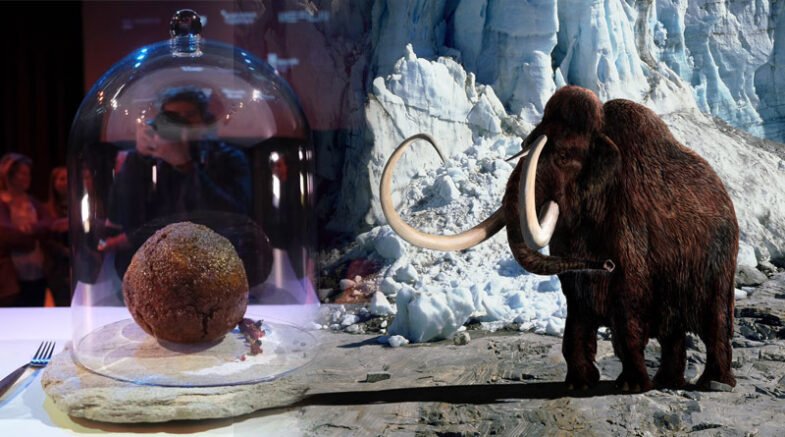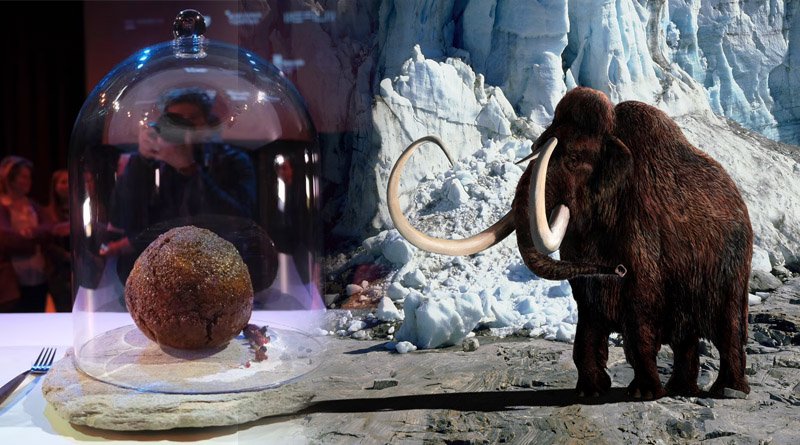The meatball will be added to the collection on Tuesday at the Netherlands’ Rijksmuseum Boerhaave, a museum of science and medicine.

An Australian company called Vow that specialises in cultured meat has created what it calls a mammoth meatball. The project’s objective, according to the company, is to raise awareness of the potential for cultured meat to improve dietary practises while protecting the environment.
Scientists have discovered woolly mammoth remains in the Arctic permafrost, allowing them to sequence the genome and grow an approximate version of mammoth meat in a lab.
The meatball will be added to the collection on Tuesday at the Netherlands’ Rijksmuseum Boerhaave, a museum of science and medicine.
“We must begin to reconsider how we obtain our food. My biggest wish for this project is for cultured meat to become more widely known throughout the world, “James Ryall, chief scientific officer at Vow, said.
The meatballs are a hilarious publicity gimmick and not for human consumption. It’s a stretch to even call the creation “mammoth meat.” It more closely resembles lab-made lamb mixed with a minuscule amount of mammoth DNA.
The project’s scientists lacked access to a frozen supply of mammoth tissue on which to base their work. Instead, they concentrated on myoglobin, a protein found in mammals that gives meat its texture, colour, and flavour. They found the DNA sequence for the mammoth version of this protein in a freely accessible genome database.
They used data from the African elephant genome to fill in gaps in the mammoth myoglobin DNA sequence. In order to grow the synthesised gene, researchers first introduced it into a sheep muscle cell. 400 grammes of mammoth meat were eventually produced by the team.
Ernst Wolvetang, a professor and senior group leader at the Australian Institute for Bioengineering and Nanotechnology at the University of Queensland who was involved in the project, said that from a genomic perspective, only one gene out of all the other sheep genes is mammoth.
It’s one gene out of 25,000, she said. According to Ryall, the physical characteristics of the sheep muscle cells were altered by the mammoth myoglobin.
Ryall and Wolvetang both claimed they had never tried the meatballs, despite the fact that our Stone Age ancestors hunted and likely consumed mammoth.
“Normally, we would taste and experiment with our products. But given that we’re talking about a protein that hasn’t existed for 5,000 years, we were hesitant to immediately try and taste it. I’ve got no idea what the potential allergenicity of this particular protein might be,” Ryall said.
“One of the reasons we aren’t selling this as a product is because of that. It won’t be put up for sale because we don’t know the safety history of this specific product, ” he added.
Advocates believe that cultured meat will lessen the need to kill animals for food and contribute to the fight against global warming. A third of the world’s greenhouse gas emissions come from the food system, primarily from animal agriculture.
Vow aspires to sell the lab-made quail meat it has created as soon as Singapore, the first nation to approve cultured meat, grants regulatory approval. The FDA in the US has declared that chicken raised in laboratories is safe to eat.
Mammoths went extinct around 5,000 years ago, but their remains have been discovered in permafrost and are so well preserved that they still have blood in their veins. Love Dalén, a professor of evolutionary genomics at the Centre for Paleogenetics at Stockholm University, has tasted mammoth meat and sequenced the oldest mammoth DNA ever found.
Dalén claimed he sampled some frozen meat from a baby mammoth’s partial carcass while on a field trip to the Yana River in Siberia in 2012. Although Dalén could not see much scientific value in the meatball project, he declared he would definitely try one if they were ever sold. I would definitely love to try this! he exclaimed. It can’t taste any worse than real mammoth meat, right?
